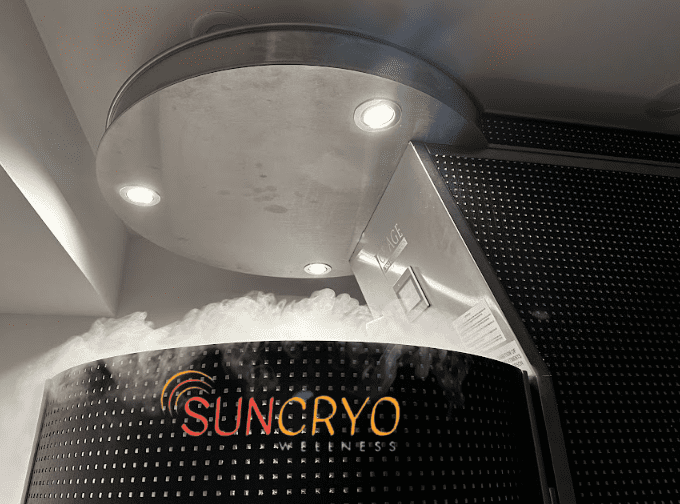cryotherapy
In the quest for enhanced recovery and performance, athletes and individuals seeking relief from muscle soreness often explore alternative methods. Two popular choices in this realm are cryotherapy and ice baths. Both methods involve exposing the body to cold temperatures, but they differ in application and benefits. click here
Understanding Cryotherapy
Cryotherapy, derived from the Greek words “cryo” (cold) and “therapy” (treatment), involves exposing the body to extremely cold temperatures for therapeutic purposes. This can be achieved through various methods such as whole-body cryotherapy chambers or localized cryotherapy devices. The principle behind cryotherapy is to induce vasoconstriction, reducing blood flow to certain areas of the body, which can help alleviate inflammation and promote healing.
Exploring Ice Baths
Ice baths, on the other hand, involve immersing the body in cold water, typically ranging from 50 to 59 degrees Fahrenheit (10 to 15 degrees Celsius) for a predetermined duration. The cold water acts as a natural anti-inflammatory, constricting blood vessels and reducing swelling in muscles and tissues. Ice baths are often used by athletes post-exercise to aid in muscle recovery and reduce soreness.
Comparing Cryotherapy and Ice Baths
When comparing cryotherapy to ice baths, both offer unique benefits and applications. Cryotherapy sessions are typically shorter in duration compared to ice baths, with sessions lasting only a few minutes. This makes cryotherapy a convenient option for individuals with busy schedules or those seeking quick recovery between training sessions.
On the other hand, ice baths require more time commitment, as individuals need to immerse themselves in cold water for around 10 to 15 minutes to experience the full benefits. While cryotherapy may provide a more intense cold sensation initially, some individuals prefer the gradual cooling effect of ice baths.
In terms of effectiveness in muscle recovery, both cryotherapy and ice baths have been shown to reduce inflammation and soreness post-exercise. However, some studies suggest that cryotherapy may offer slightly superior results in terms of reducing muscle damage and improving recovery time.
Safety and Precautions
It’s important to note that both cryotherapy and ice baths come with potential risks and precautions. Cryotherapy sessions should be supervised by trained professionals to ensure safe and effective treatment. Individuals with certain medical conditions such as hypertension or heart disease should consult with a healthcare provider before undergoing cryotherapy.
Similarly, ice baths should be approached with caution, especially for individuals with circulatory issues or sensitivity to cold temperatures. Prolonged exposure to cold water can lead to hypothermia or exacerbate existing injuries, so it’s essential to monitor the duration and temperature of ice bath sessions carefully.
Which One is Right for You?
Ultimately, the choice between cryotherapy and ice baths depends on individual preferences, lifestyle, and specific recovery needs. Factors such as accessibility, cost, and convenience may influence your decision. Some individuals may prefer the immersive experience of an ice bath, while others may opt for the quick and targeted benefits of cryotherapy.
It’s advisable to experiment with both methods and observe how your body responds. Consulting with a healthcare provider or sports medicine professional can also provide personalized recommendations based on your unique circumstances.
Conclusion
In conclusion, both cryotherapy and ice baths offer valuable benefits for muscle recovery and overall well-being. While they share the common goal of reducing inflammation and promoting healing, each method has its unique advantages and considerations. Whether you choose cryotherapy or ice baths, incorporating cold therapy into your recovery routine can help optimize performance and enhance recovery. click here
FAQs
Is cryotherapy or ice baths better for muscle recovery?
- Both cryotherapy and ice baths can be effective for muscle recovery, but individual preferences and needs may vary.
Are there any risks associated with cryotherapy?
- While cryotherapy is generally safe when administered correctly, there are potential risks such as frostbite or skin irritation.
How often should I use cryotherapy or ice baths?
- The frequency of cryotherapy or ice bath sessions depends on factors such as training intensity, recovery goals, and individual tolerance.
Can cryotherapy help with chronic pain conditions?
- Some individuals may experience relief from chronic pain conditions such as arthritis or fibromyalgia with regular cryotherapy sessions, but results may vary.
Are there any alternatives to cryotherapy and ice baths for muscle recovery?
- Yes, alternatives such as contrast water therapy, compression therapy, or massage can also aid in muscle recovery and reduce soreness.

